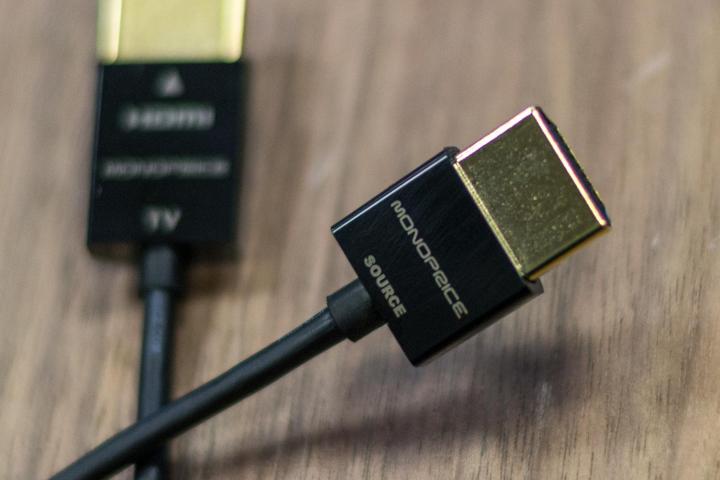
The latest HDMI specification is HDMI 2.0b, which refers to the latest features enabled by the HDMI connection. It’s what ensures that different products made by different companies will work together to provide the best possible audio and video experience.
To gain the benefits of HDMI 2.0, and output 4K/60Hz to your monitor, you need a video card that can handle the specification. Most recent Nvidia card can handle it. AMD cards have decided to rely on DisplayPort instead, which is more common in the PC space than with HDTVs and other home theater equipment.
What HDMI 2.0b does not define, however, is a new class of HDMI cable or connector.
Rather, the HDMI Forum, which is a trade association made up of leading consumer electronics companies, has defined the following designations to indicate how much bandwidth cables can handle and thus which of the HDMI 2.0b features they can support:
- Standard HDMI Cable: Supports up to 1080i or 720p video
- Standard HDMI Cable with Ethernet: Same baseline performance as the Standard HDMI Cable, plus an additional dedicated data channel for device networking
- High Speed HDMI Cable: Supports up to 4K at 60Hz, 3D, and Deep Color display technologies
- High Speed HDMI Cable with Ethernet: Same baseline performance as the High Speed HDMI Cable, plus an additional dedicated data channel for device networking
- Premium High Speed HDMI Cable: Special designation for High Speed HDMI Cables that have passed additional testing and certification for ultra-reliable performance for the most advanced capabilities, including high frame rates, HDR, expanded color space, and more
- Premium High Speed HDMI Cable with Ethernet: Same baseline performance as the Premium High Speed HDMI Cable, plus an additional data channel for device networking
In terms of sheer bandwidth, the magical number is 18Gbps, which is considered sufficient to support all of the next-generation features available to devices on the market today. Technically speaking, cables designated as High Speed HDMI cables or greater are capable of achieving that 18Gbps performance level.

Therefore, if you want to buy the best possible cable to ensure that you get the most out of your new 4K/UltraHD HDR-enabled TV, or the best possible display performance out of your gaming console, then you’ll want to pick up a Premium certified High Speed HDMI Cable. At the same time, if you want to save a few bucks, then a High Speed HDMI Cable will work.
In summary, here’s what you need for 4K resolution at 60Hz — a video card and a monitor capable of HDMI 2.0, and a High Speed HDMI cable. If you have an existing setup and are upgrading, you’ll need to make sure your devices support HDMI 2.0. But, if you already have High Speed HDMI Cables, you should be able to use them without issue.
If you want to know even more about HDMI 2.0, then go check out our full explainer, which covers not only cables and PC hardware but also HDTVs, Blu-Rays, and more.


